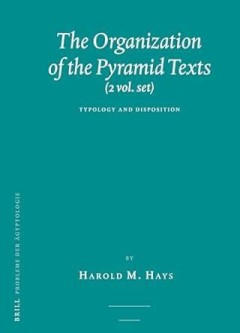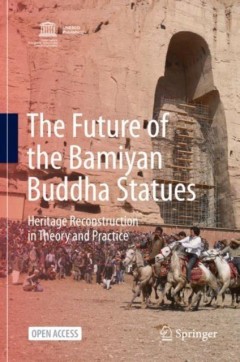Filter by

A Contemporary Archaeology of London’s Mega Events : From the Great Exhibit…
A Contemporary Archaeology of London's Mega Events explores the traces of London's most significant modern 'mega events'. Though only open for a few weeks or months, mega events permanently and disruptively reshape their host cities and societies: they demolish and rebuild whole districts, they draw in materials and participants from around the globe and their organisers self-consciously seek t…
- Edition
- -
- ISBN/ISSN
- 9781787358447
- Collation
- 71 hlm
- Series Title
- -
- Call Number
- -

A Constellation of Courts : The Courts and Households of Habsburg Europe, 155…
This volume focuses on the various Habsburg courts and households of the two branches of the dynasty that arose following the division of the territories originally held by Charles V. The authors trace the connections between these courtly communities regardless of their standing or composition, exposing the underlying network they formed. By cutting across the traditional division in the histo…
- Edition
- -
- ISBN/ISSN
- 9789058679901
- Collation
- 394 hlm
- Series Title
- -
- Call Number
- -

"The Only True People": Linking Maya Identities Past and Present
In The Only True People, a multidisciplinary group of archaeologists, linguists, ethnographers, ethnohistorians, and epigraphers evaluate views of Maya history and prehistory in order to more accurately characterize the unique nature of the people known as the Maya by exploring the construction of their identities in the past and the present. Each author evaluates what makes identifiable socioc…
- Edition
- -
- ISBN/ISSN
- 9781607325673
- Collation
- -
- Series Title
- -
- Call Number
- -

"At the Shores of the Sky"; Asian Studies for Albert Hoffstädt
Albert Hoffstädt, a classicist by training and polylingual humanist by disposition, has for 25 years been the editor chiefly responsible for the development and acquisition of manuscripts in Asian Studies for Brill. During that time he has shepherded over 700 books into print and has distinguished himself as a figure of exceptional discernment and insight in academic publishing. He has also be…
- Edition
- -
- ISBN/ISSN
- 9789004438200
- Collation
- -
- Series Title
- -
- Call Number
- -

The Tomb of the Priests of Amun : Burial Assemblages at the National Museum o…
Previously unpublished, the Danish Lot of antiquities from the Tomb of the Priests of Amun (Bab el-Gasus) is thoroughly examined in this book. The in-depth analysis of the objects is followed by an assessment of how these objects were crafted, designed, used and recycled in the Theban necropolis, a procedure that not only reveals to be instrumental in the dating of the objects, as it sheds ligh…
- Edition
- -
- ISBN/ISSN
- 9789004524804
- Collation
- 536 hlm; ill., lamp.,
- Series Title
- Culture and History of the Ancient Near East, Volume: 130 Gate of the Priests, Volume: 130
- Call Number
- -

The Tomb of the Priests of Amun = Burial Assemblages in the Egyptian Museum o…
The Tomb of the Priests of Amun, also known as Bab el-Gasus, was uncovered in 1891 at Deir el-Bahari (Thebes). The site proved to be the largest undisturbed tomb ever found in Egypt, as there were found the intact burials of 153 individuals that lived under the 21st Dynasty (ca. 1069-945 BC). This outstanding find was subsequently divided in lots of antiquities and dispersed by 17 nations. …
- Edition
- -
- ISBN/ISSN
- 9789004386501
- Collation
- 576hlm; ill., lamp.,
- Series Title
- Culture and History of the Ancient Near East, Volume: 97 Gate of the Priests, Volume: 97
- Call Number
- -

The Saqqara Necropolis through the New Kingdom = Biography of an Ancient Egyp…
This book is the first comprehensive monographic treatment of the New Kingdom (1539–1078 BCE) necropolis at Saqqara, the burial ground of the ancient Egyptian city of Memphis, and addresses questions fundamental to understanding the site’s development through time. For example, why were certain areas of the necropolis selected for burial in certain time periods; what were the tombs’ spati…
- Edition
- -
- ISBN/ISSN
- 9789004467149
- Collation
- 560 hlm; ill., lamp.,
- Series Title
- Culture and History of the Ancient Near East, Volume: 131
- Call Number
- -

The Phoebe A. Hearst Expedition to Naga ed-Deir, Cemeteries N 2000 and N 2500
The Phoebe A. Hearst Expedition to Naga ed-Deir, Cemeteries N 2000 and N 2500 presents the results of excavations directed by George A. Reisner and led by Arthur C. Mace. The site of Naga ed-Deir, Egypt, is unusual for its continued use over a long period of time (c. 3500 BCE–650 CE). Burials in N 2000 and N 2500 date to the First Intermediate Period/Middle Kingdom and the Coptic era. In keep…
- Edition
- -
- ISBN/ISSN
- 978900439690
- Collation
- 544 hlm; ill., lamp.,
- Series Title
- Harvard Egyptological Studies, Volume: 10
- Call Number
- -

The Organization of the Pyramid Texts (2 vols.) = Typology and Disposition
The ancient Egyptian Pyramid Texts form the oldest sizable body of religious texts in the world. Discovered in the late nineteenth century, they had been inscribed on the interior stone walls of the pyramid tombs of third-millennium kings and queens. From their content it is clear that they were concerned with the afterlife state of the tomb owner, but the historical meaning of their emergence …
- Edition
- -
- ISBN/ISSN
- 9789004227491
- Collation
- 348 hlm; ill., lamp.,
- Series Title
- Probleme der Ägyptologie, Volume: 31
- Call Number
- -

The Future of the Bamiyan Buddha Statues = Heritage Reconstruction in Theory …
This Open Access book explores heritage conservation ethics of post conflict and provides an important historical record of the possible reconstruction of the Bamiyan Buddha statues, which was inscribed in the UNESCO World Heritage List in Danger in 2003 as “Cultural Landscape and Archaeological Remains of the Bamiyan Valley”. With the condition that most surface of the original fragments o…
- Edition
- 1
- ISBN/ISSN
- 9783030513160
- Collation
- XXV, 364 hlm; ill., lamp.,
- Series Title
- -
- Call Number
- -
 Computer Science, Information & General Works
Computer Science, Information & General Works  Philosophy & Psychology
Philosophy & Psychology  Religion
Religion  Social Sciences
Social Sciences  Language
Language  Pure Science
Pure Science  Applied Sciences
Applied Sciences  Art & Recreation
Art & Recreation  Literature
Literature  History & Geography
History & Geography